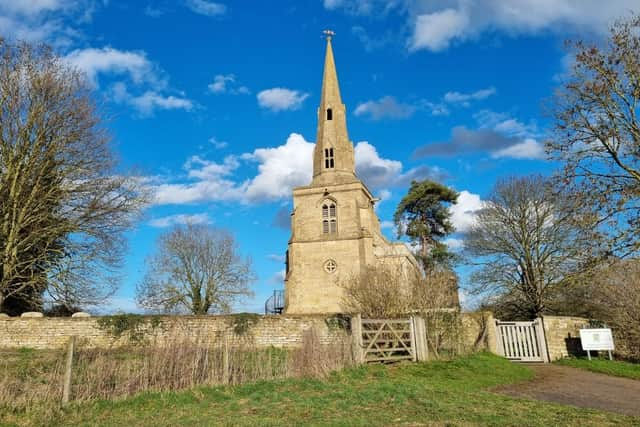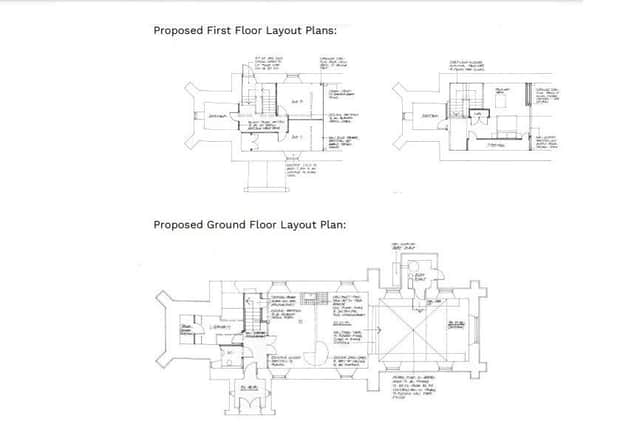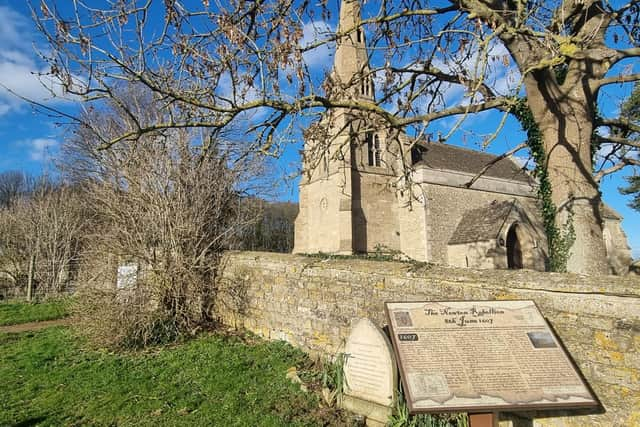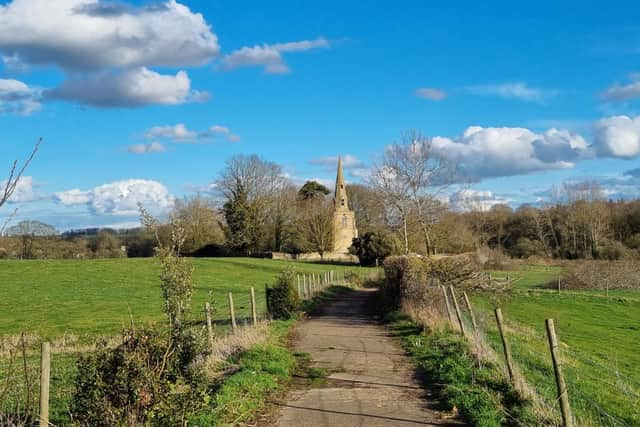Plans submitted to convert historic disused Northamptonshire village church into a four-bedroom house
and live on Freeview channel 276
Plans to convert a rural disused church into a four-bedroom house have been submitted to North Northants Council.
The Newton Field Centre building was, until 1974, the church of St Faiths in Newton-in-the-Willows near Geddington.
Advertisement
Hide AdAdvertisement
Hide AdTurned into an education centre the Grade II Listed church – complete with a spire – became a residential and day field centre for four decades and is owned and managed by charity Newton-in-the-Willows Trust.


But after its support budget was withdrawn by the cash-strapped Northamptonshire County Council, the centre could no longer pay its way – only maintained off dwindling reserves.
A report to support the conversion into a four-bedroom house, prepared by agents Berrys, said: "The proposal would secure the optimum viable use of a nationally and locally important Grade II Listed building and therefore would have public benefits by securing the heritage assets significance for the long term.
“(It would) result in the re-use of a disused building without significant changes.
Advertisement
Hide AdAdvertisement
Hide Ad"The minimal internal layout changes provide a balanced use of living and sleeping space providing optimum viability of space whilst at the same time retaining the historical changes that have been undertaken over the last two or three uses, even exposing and improving the original building features with a changed layout which releases feature arches and windows.”


The Newton Field Centre building currently has two dormitories, toilets, showers, a kitchen and a large laboratory/classroom area for residential courses for school trips and educational visits.
The proposed residential use would not include the graveyard although it would include pedestrian access across the graveyard, together with the change of use of a triangular piece of land currently part of the field centre for a domestic garden and parking.
In 1971, Church Commissioners declared the property redundant by an order. When Kettering headmaster and celebrated author JL Carr discovered the plans by the Diocese of Peterborough to close the church down, he was determined to save the medieval church from future vandalism. Many of the fittings had been moved to other churches or stolen by intruders’ archaeological excavations.
Advertisement
Hide AdAdvertisement
Hide AdOn January 14, 1974 the property was transferred to the Newton-in-the-Willows Trust trustees to be used as a field centre for the study of natural history. An appeal raised funds to adapt the property but after more than four decades pupil numbers and income had dropped. The trust’s teacher/administrator was made redundant in June 2018.


Efforts were made to secure the centre’s future to take on the property.
The report said: “The nearest opportunity was an academy secondary school in Kettering, however after much investment of time, the trust funding the academy vetoed the headmaster’s business plan and the off-site environmental classroom and centre of excellence which was consequentially terminated. Other explored avenues were also rejected.
“It is clear to the trustees the current funds they hold will be exhausted within two years from now if no alternative use is found. St Faith’s Church is in good condition but needs a viable use to ensure internal and external maintenance continue. There are no educational operators locally or nationally who would consider running the property as an educational establishment.”
Advertisement
Hide AdAdvertisement
Hide AdOver the last three years, three unsolicited offers to purchase the church for use as a residence have been made.


Alan Wordie, trustee, said: “The trust has sufficient funds to manage the property for no more than two years, in satisfying Companies House and the Charity Commission on top of heating and property insurance amongst other costs. Doing nothing and status quo is not an option. The educational options are exhausted and must be discounted.
"The trust believes the property must be part of the legacy (i.e. the church building remains part of the landscape) and a viable use is the only way to deliver for future generations enjoying the River Ise valley landscape and having regard to the history surrounding St. Faith’s Church. Consequently the trustees are in unanimous agreement a change of use to a residence which can utilise the full extent of the property (i.e. a four-bed property with living and kitchen areas) is now the only way forward.”
Historic England said: “Historic England has concerns regarding this application on heritage grounds. We consider that this application is not in a position where it can be approved. The roof glazing is objectionable in principle. There is a substantial amount of information missing regarding: marketing, justifications, issues affecting setting, archaeological implications, and detail drawings for internal works.”
Advertisement
Hide AdAdvertisement
Hide AdThe trust has been advised to seek input from specialist external conservation and archaeological experts.
To see the full application go to North Northants Council planning portal searching for application NK/2023/0084
The Newton Rebellion
The Newton Rebellion took place close to St Faith’s Church where there is a memorial to those killed in 1607. The rebellion saw peasants killed on Newton Field following an attack by local landowners on a protest against enclosure.
Advertisement
Hide AdAdvertisement
Hide AdMore than 1,000 men, women and children from across the area had gathered to protest against the actions of Thomas Tresham of Newton, who had enclosed the Brand – an area of waste and common land. A key figure in the protest was Captain Pouch, a tinker said to be from Desborough.
Records said that 40-50 rioters were killed in the field and many more captured, some of whom were later to be executed and have their mutilated bodies displayed at Northampton, Oundle and other local towns. Captain Pouch was caught, hanged, drawn and quartered.
The Newton Rebellion was one of the last times that the peasantry of England and the gentry were in open conflict.